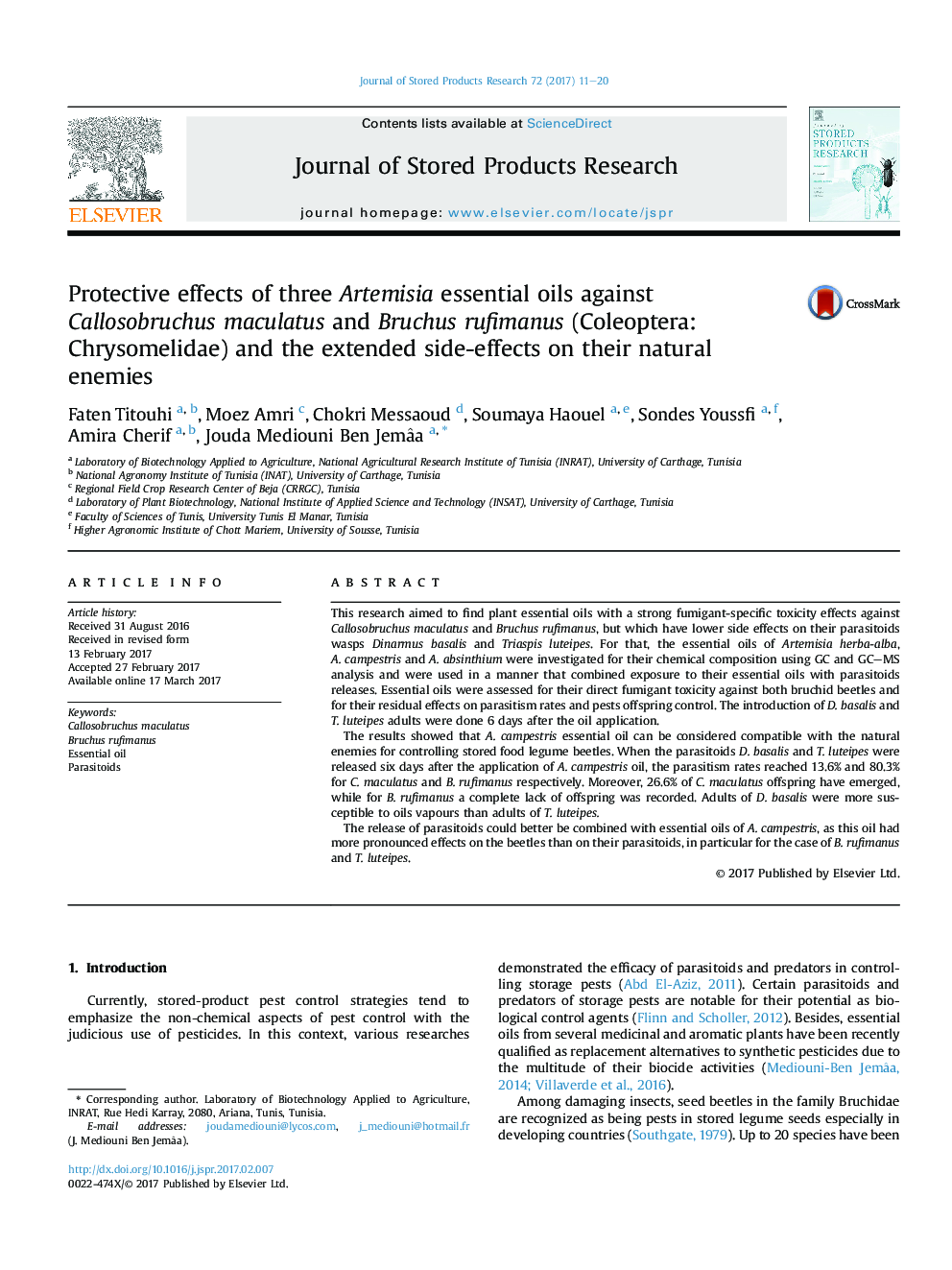| کد مقاله | کد نشریه | سال انتشار | مقاله انگلیسی | نسخه تمام متن |
|---|---|---|---|---|
| 5762556 | 1624917 | 2017 | 10 صفحه PDF | دانلود رایگان |

- Three Artemisia species essential oils were assessed for fumigant toxicity against C. maculatus and B. rufimanus.
- Residual effects of essential oils on parasitoids Dinarnus basalis and Triaspis luteipes were studies.
- A. campestris essential oils could be compatible with D. basalis and T. luteipes releases.
This research aimed to find plant essential oils with a strong fumigant-specific toxicity effects against Callosobruchus maculatus and Bruchus rufimanus, but which have lower side effects on their parasitoids wasps Dinarmus basalis and Triaspis luteipes. For that, the essential oils of Artemisia herba-alba, A. campestris and A. absinthium were investigated for their chemical composition using GC and GC-MS analysis and were used in a manner that combined exposure to their essential oils with parasitoids releases. Essential oils were assessed for their direct fumigant toxicity against both bruchid beetles and for their residual effects on parasitism rates and pests offspring control. The introduction of D. basalis and T. luteipes adults were done 6 days after the oil application.The results showed that A. campestris essential oil can be considered compatible with the natural enemies for controlling stored food legume beetles. When the parasitoids D. basalis and T. luteipes were released six days after the application of A. campestris oil, the parasitism rates reached 13.6% and 80.3% for C. maculatus and B. rufimanus respectively. Moreover, 26.6% of C. maculatus offspring have emerged, while for B. rufimanus a complete lack of offspring was recorded. Adults of D. basalis were more susceptible to oils vapours than adults of T. luteipes.The release of parasitoids could better be combined with essential oils of A. campestris, as this oil had more pronounced effects on the beetles than on their parasitoids, in particular for the case of B. rufimanus and T. luteipes.
Journal: Journal of Stored Products Research - Volume 72, May 2017, Pages 11-20